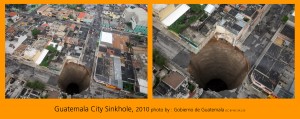When most people think of “technology” they think of a device that runs off of batteries or has to be plugged in. This would include computers, calculators or other high-tech tools. In reality technology can be looked at in a much broader way. In this activity the form of technology that will be used is Legos. This activity gives students the opportunities to brainstorm around the idea “what if I had a furniture business?” The students will be able to connect math concepts to real life situations. This real life activity will enhance the student’s way of thinking and learning. The student’s participation will get them to open up their minds and think about how other mathematical concepts can be used in the real world.
This activity aligns with standard CCSS.Math.Content.HSA.REI.D.12: Graph the solutions to a linear inequality in two variables as a half-plane (excluding the boundary in the case of a strict inequality), and graph the solution set to a system of linear inequalities in two variables as the intersection of the corresponding half-planes. The students before this activity have been working with solving and graphing one variable and two variable inequalities. The Legos will help the students reach the standard and make a deeper connection/understanding of the standard. This will happen by having the students being engaged by building the combinations of tables and chairs and recording their results in the table provided on the worksheet. With building the Lego tables and chairs as they go along, it will help them see visually how much of each piece of furniture is being created. After the students find the combination that will give them the maximum profit, they will then look at the constraints they had and create inequalities. With the inequalities they create, the students will then graph the inequalities, shade the appropriate regions and see where the linear inequalities intersect. The students will then compare their calculations from the combinations they created to the linear inequalities graph and make connections on the relationship between the two methods. The students will notice that where the inequalities intersect is where their solution is, that point is the combination of what will maximize their profit.
Central Focus of the lesson:
The students will brainstorm what goes into a furniture company. The students will be asked a series of questions where they will have time to discuss with their group members. The questions will be: What things must a company consider when producing a piece of furniture? What information does the company need to decide how much of each piece of furniture to make? For this activity the students will have to find what pieces of furniture will give them maximum profit for their furniture company. The students will be given Legos and instructions that tell what pieces make up a table and what pieces make up a chair. For example a table consists of two large and two small Lego pieces, while a chair consists of one large and two small Lego pieces. Also, the students are given how much profit will be made off of each piece of furniture. The table will have a profit of $16 and the chair will have a profit of $10. From there the students will find what combination will maximize their profit. The students will then create expressions using inequalities. They will then graph the inequalities and see a relationship between their calculations when computing what combination would maximize their profit to what their graph looks like.
Supporting the Students:
The students will be working in small groups of three of four where they will have discussions about the business. The grouping of the students are based off of a learning styles test taken at the beginning of the year. The students were split up into either social or solitary learners. It is important to split up these opposite learning styles because one side is more independent while the other is dependent on other group members. They were then split up in a way where there would be a variety of learning styles for each group in hopes of them bringing different perspectives. This activity is set up this way for many reasons. One reason is for those students who are more timid will have the opportunity to speak amongst just their group members instead of in front of the whole class. The students will be able to hear each of their group member’s thoughts and ideas. Another reason for this grouping is for the students who do get off task or get distracted easily. With the smaller grouping, those students tend to stay on task longer. These students do exceptionally well when working with manipulatives.
With more activities like these, the students will be more actively involved in their learning. From what I have seen is the students want to solve these kinds of problems because they are discovering the solutions instead of being told how to find the solution.
Lesson Plan Better Math Blog Furniture
Manufacturing Furniture Worksheet

